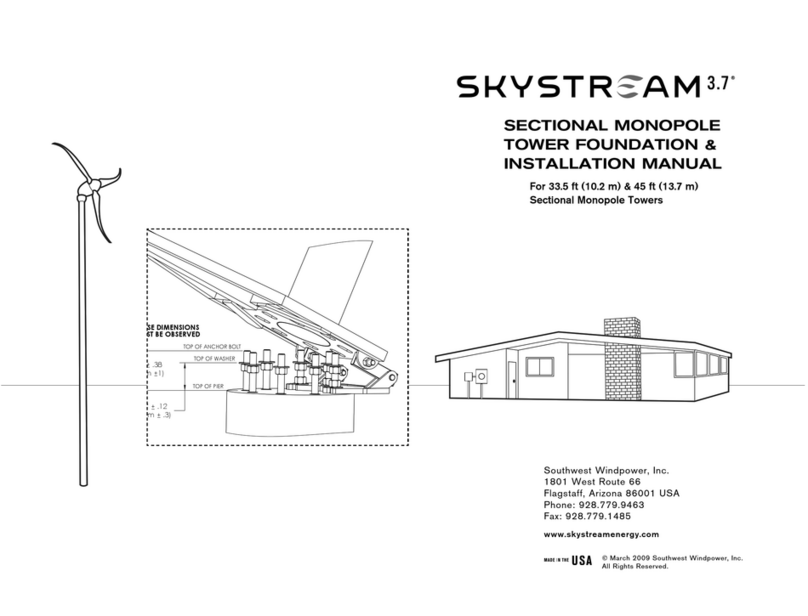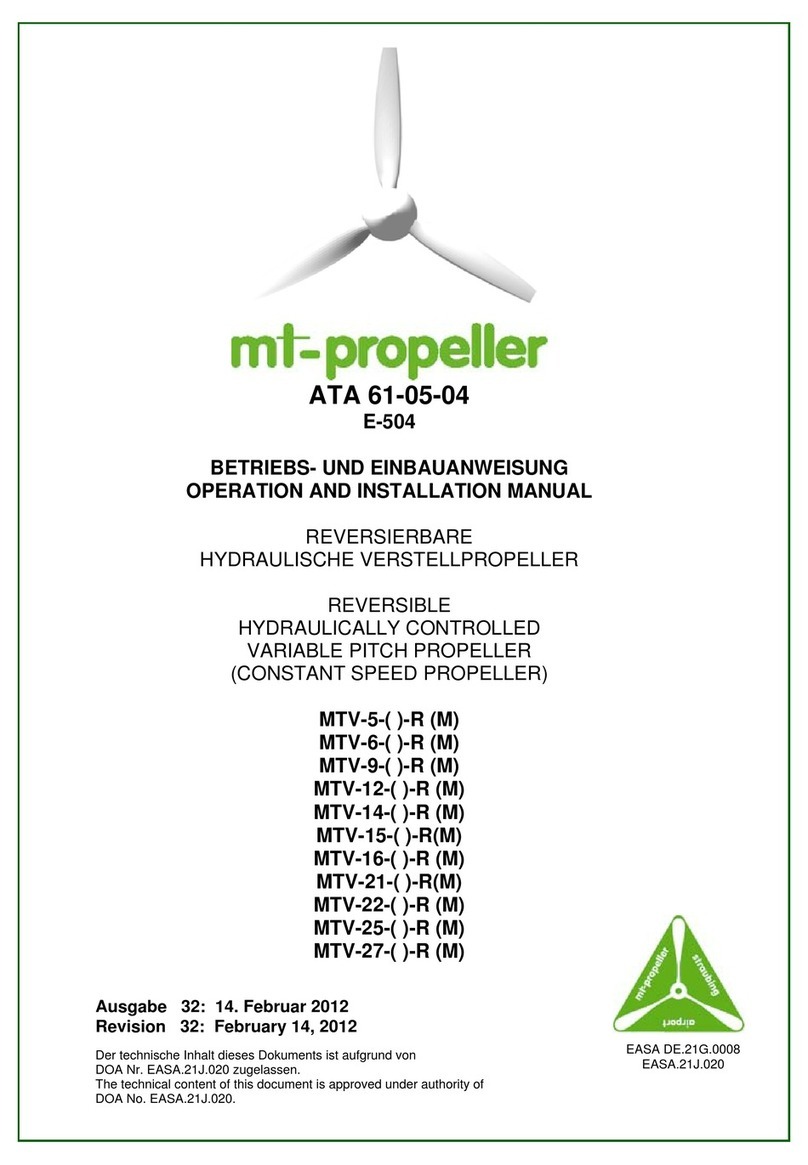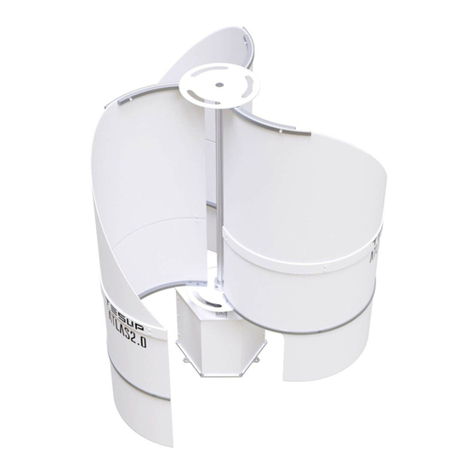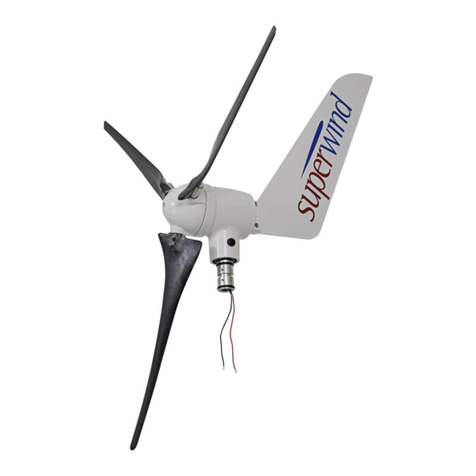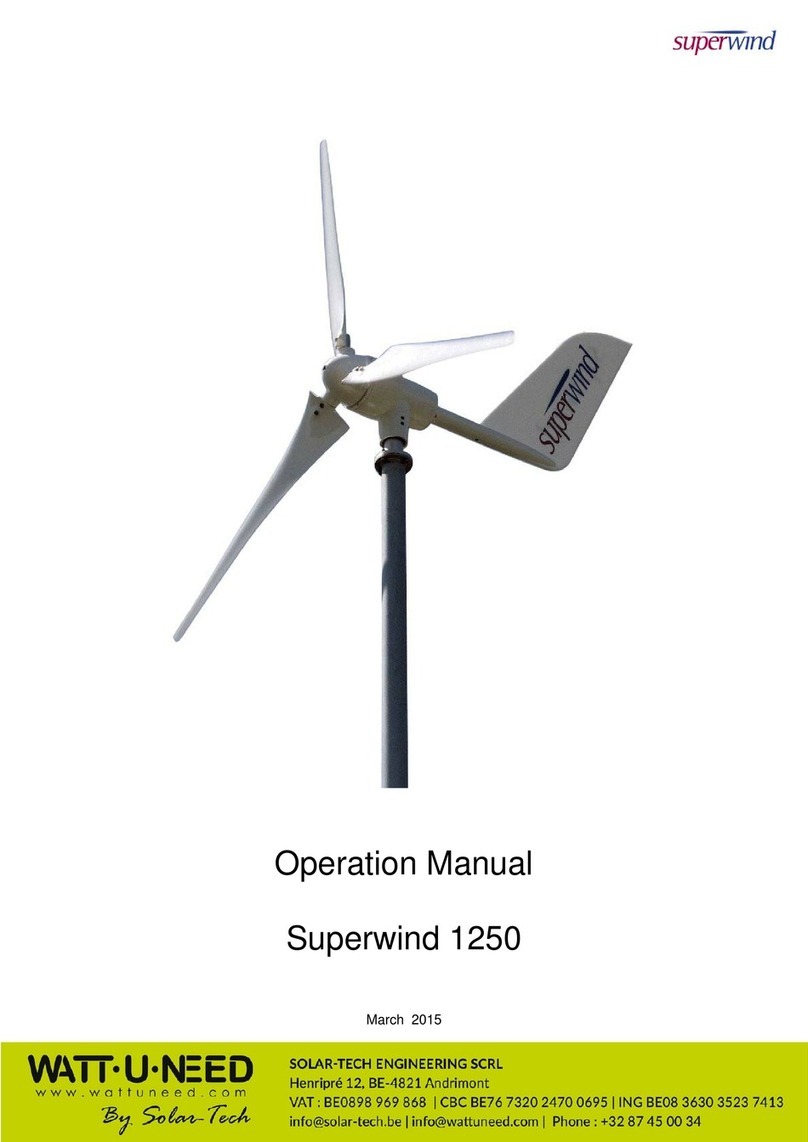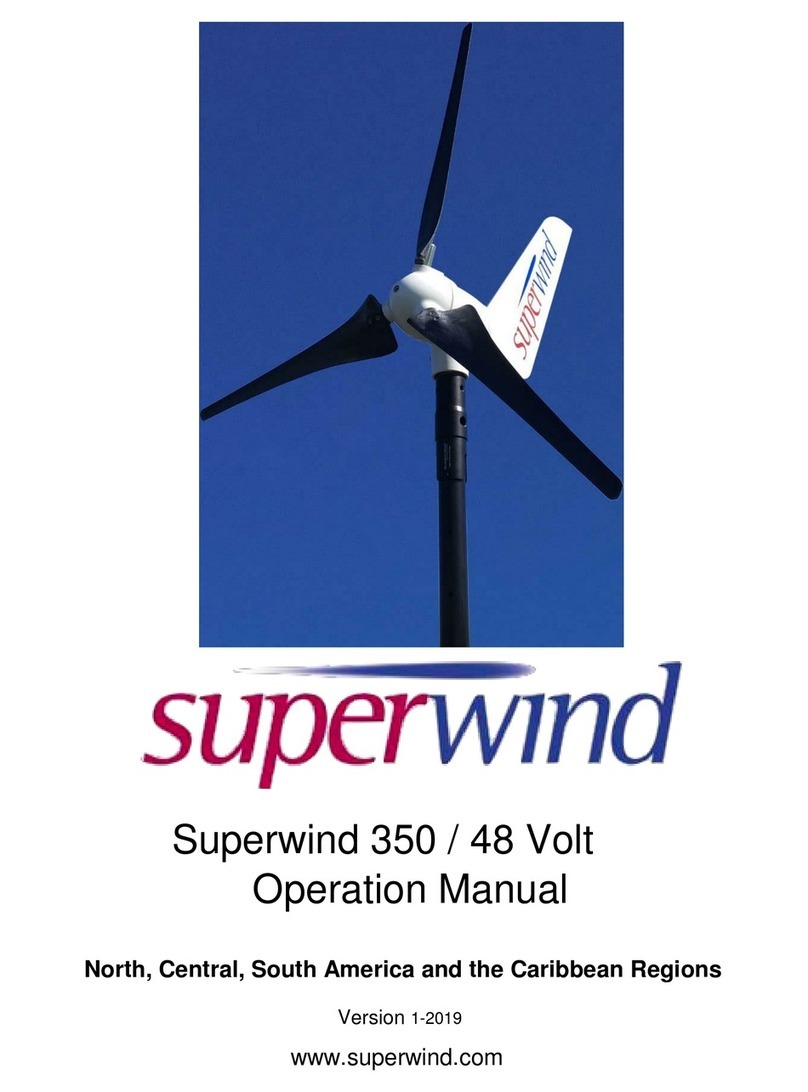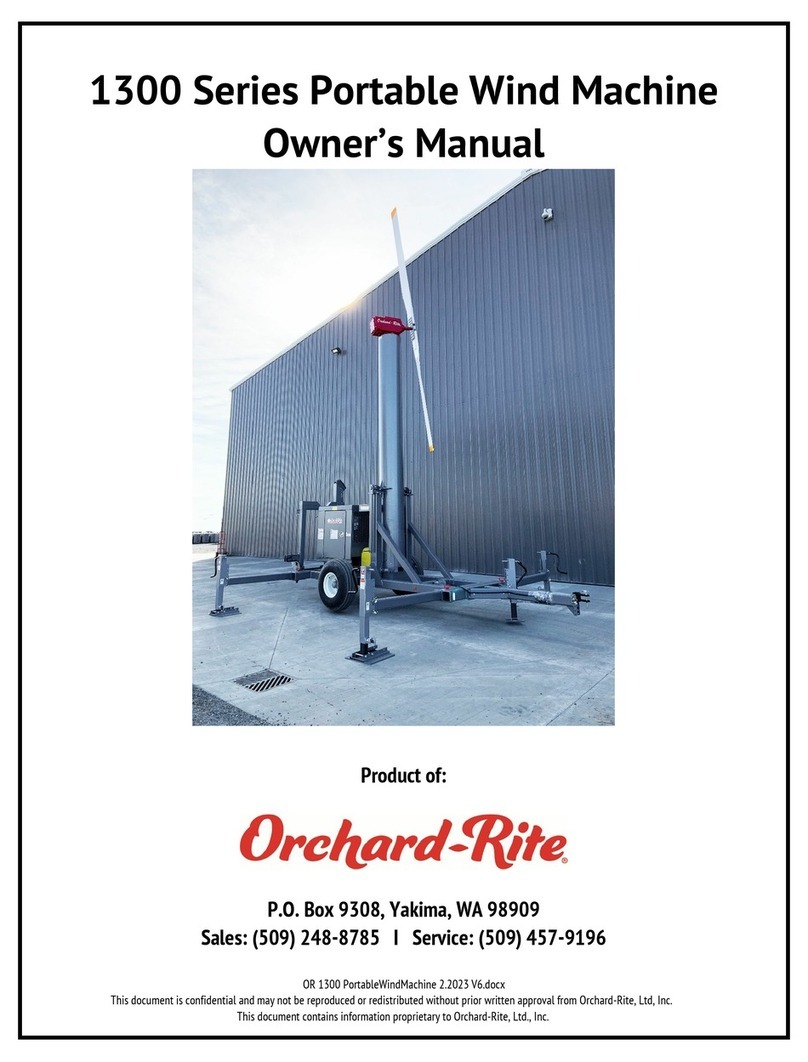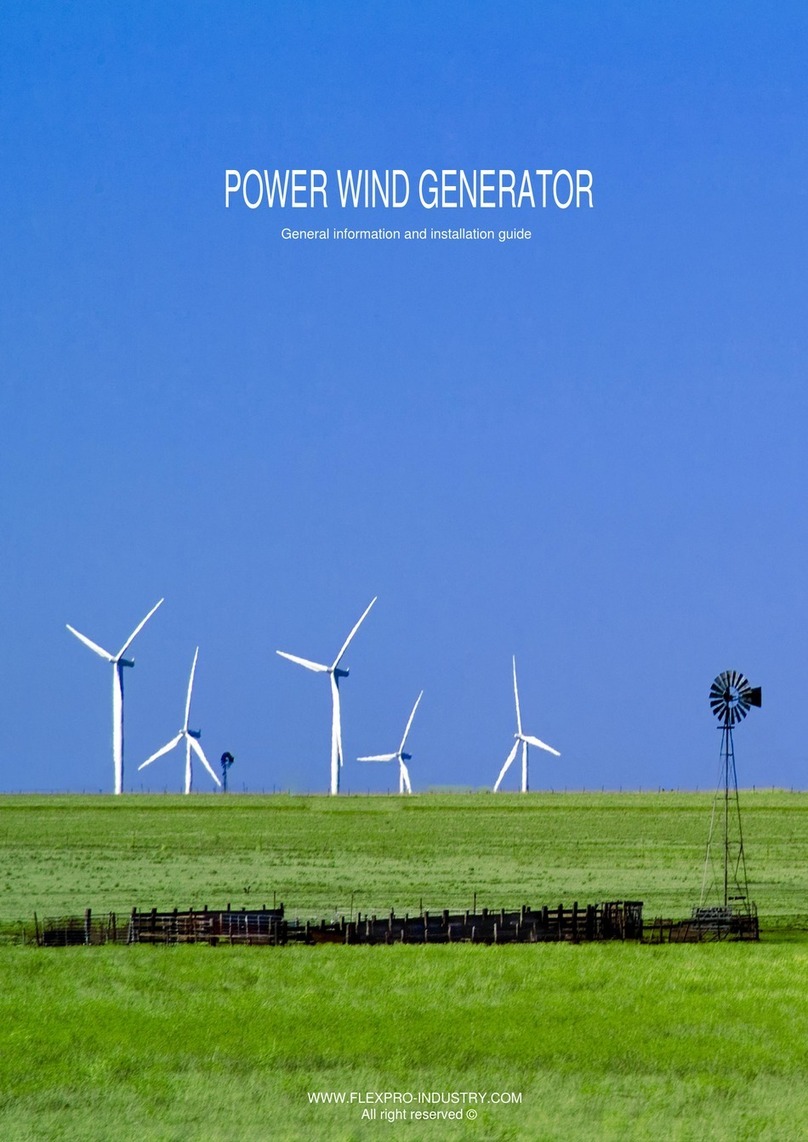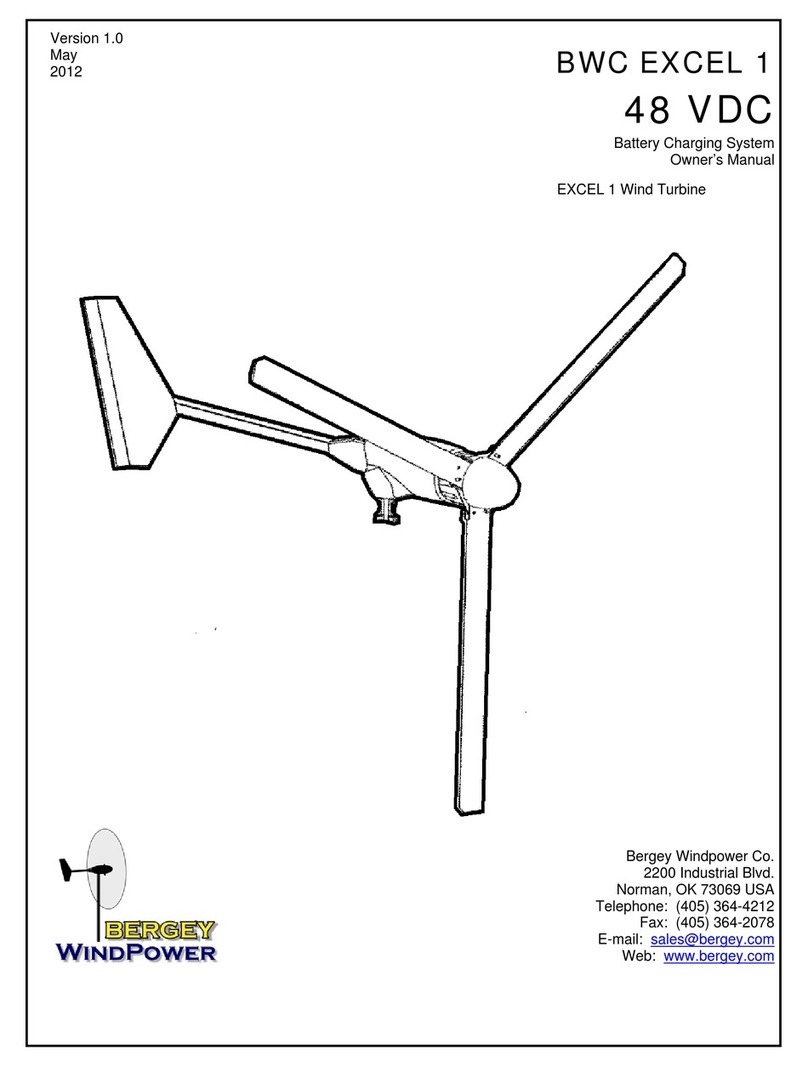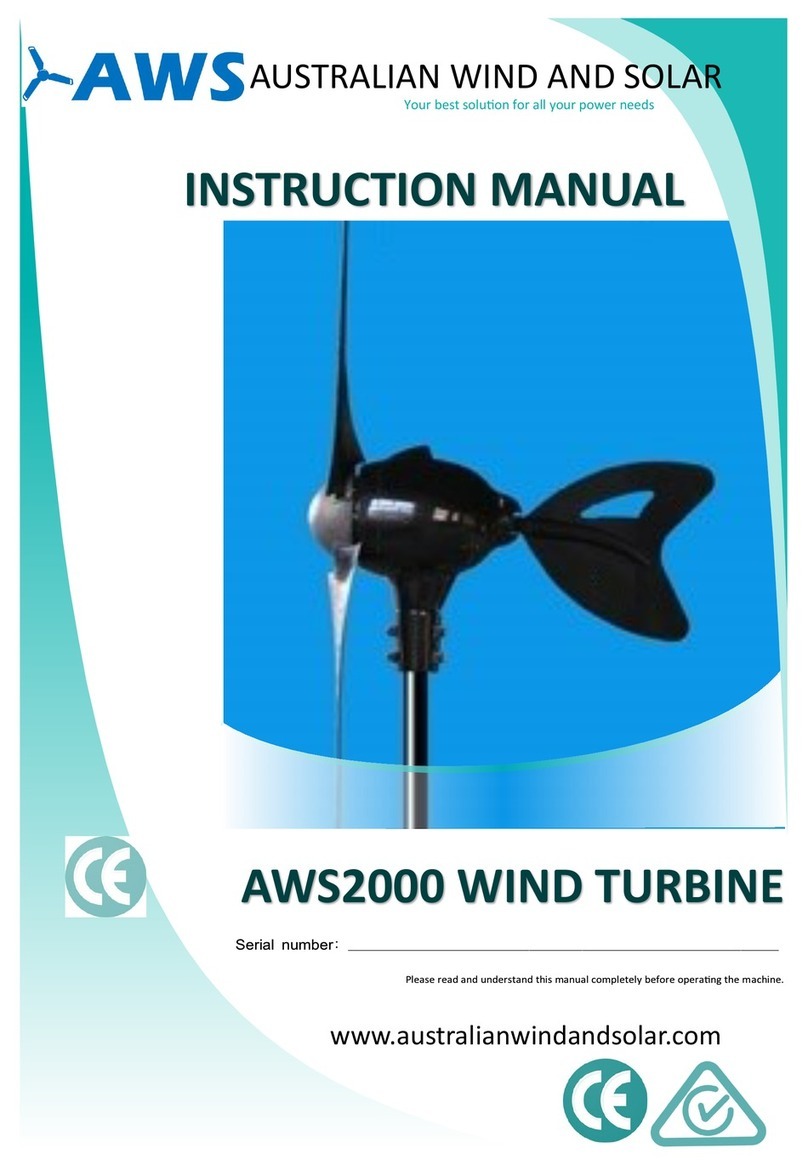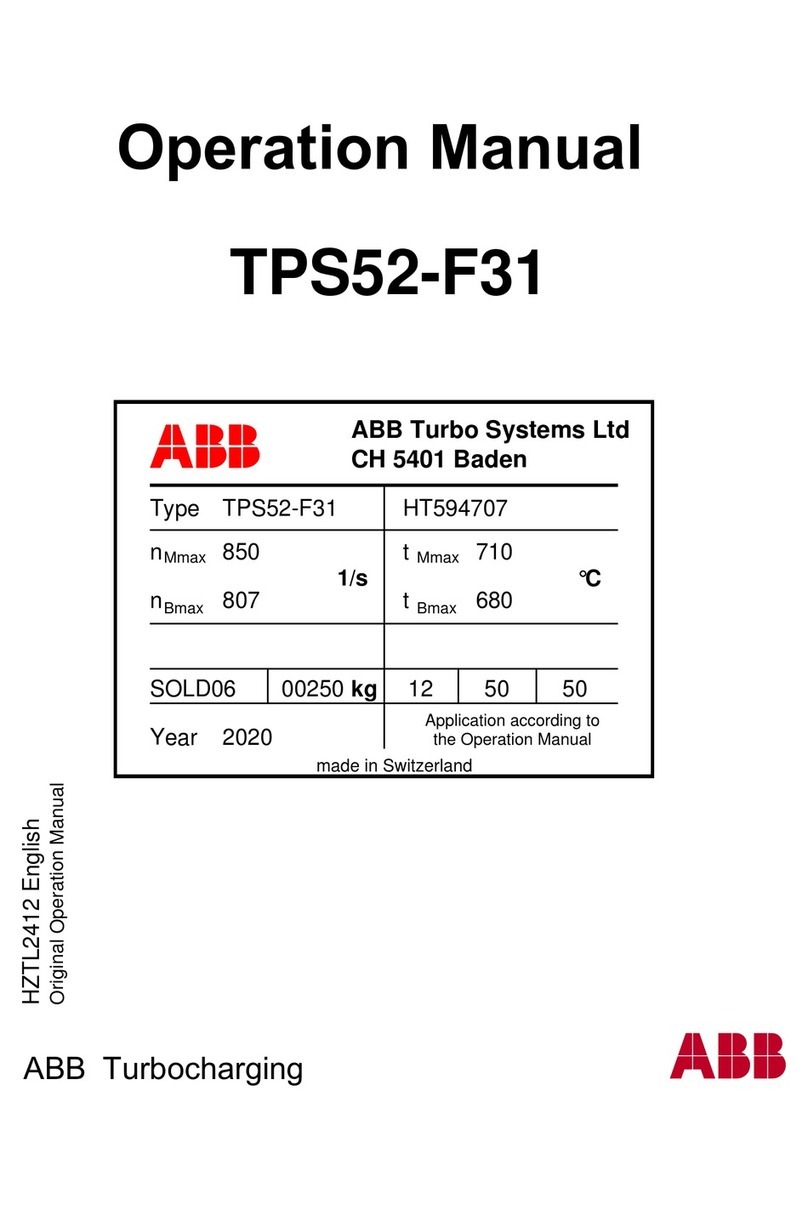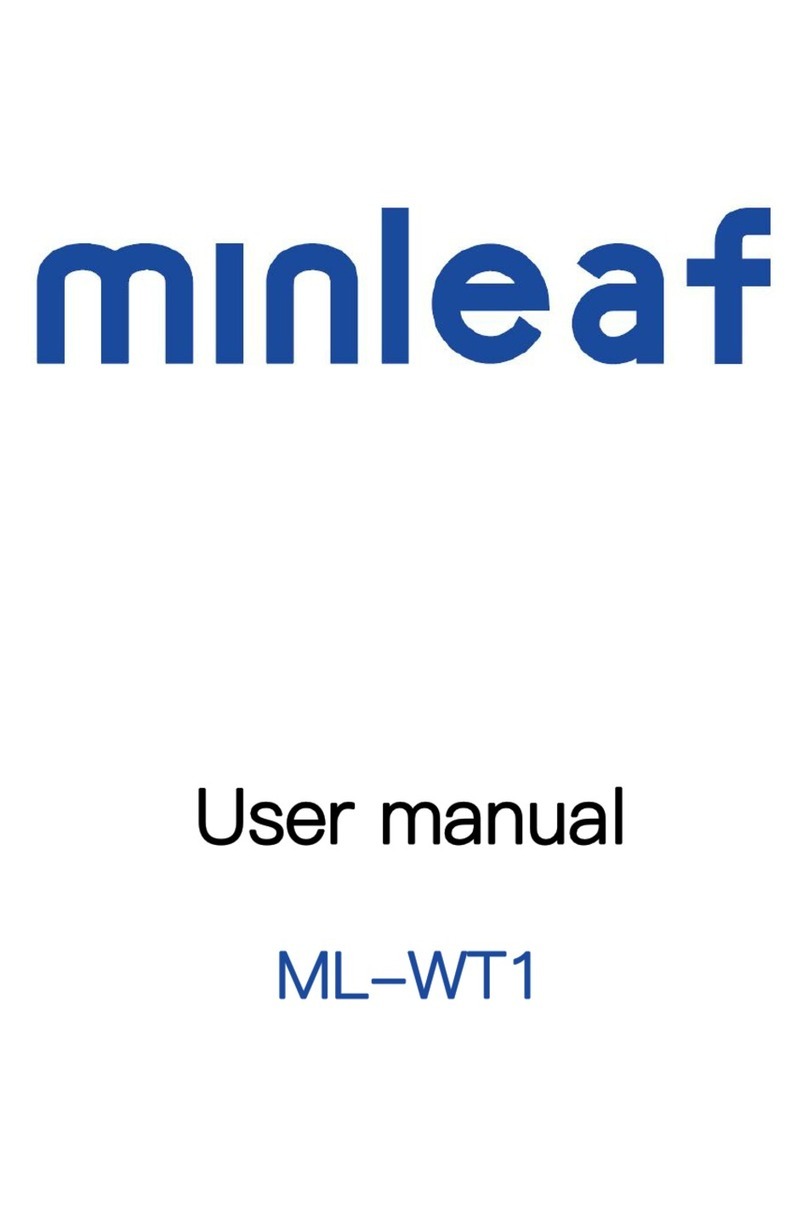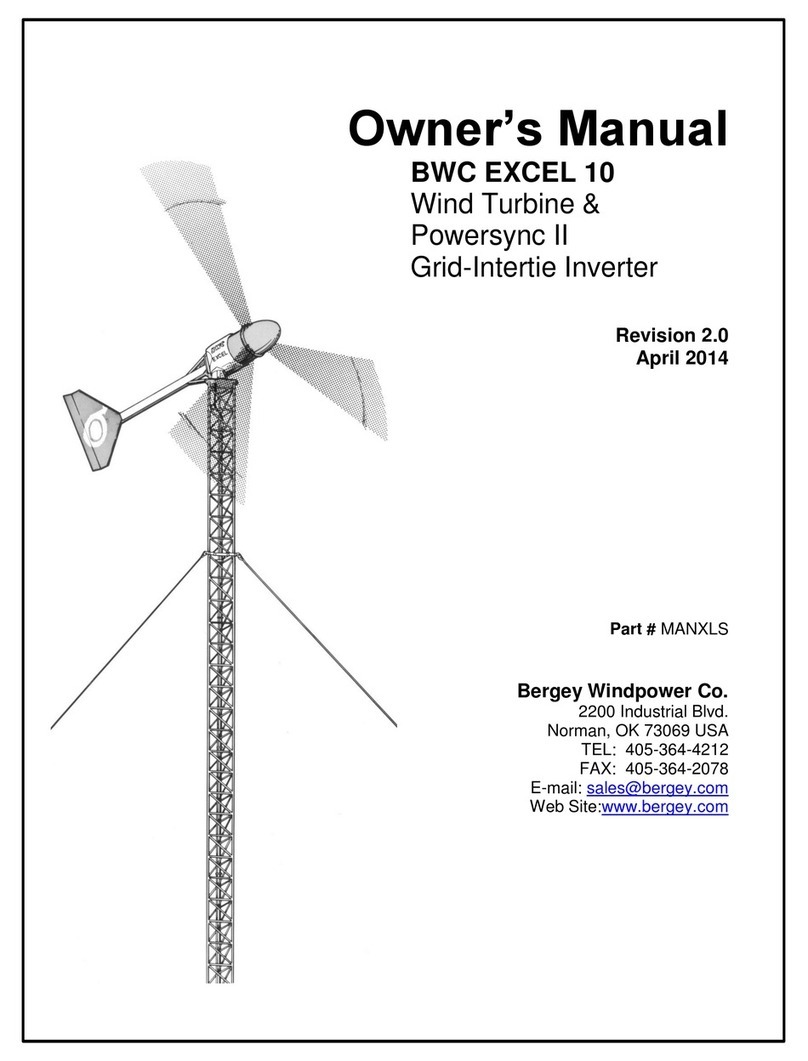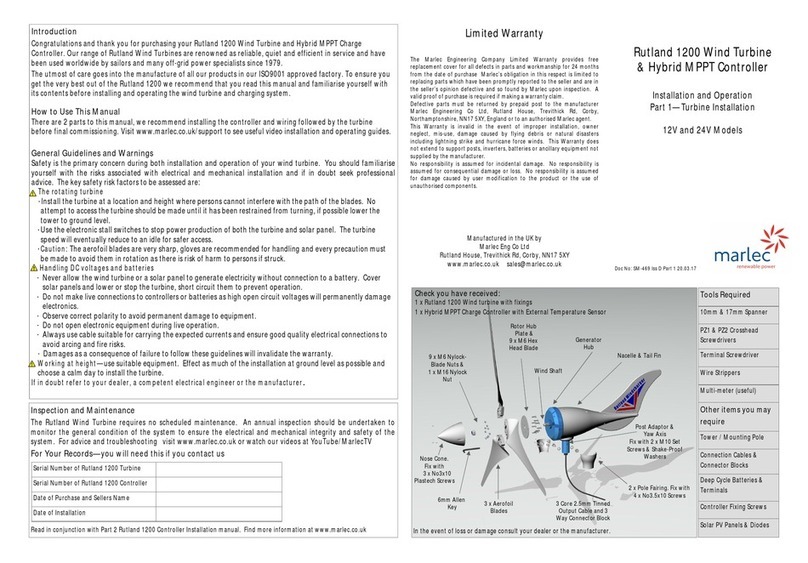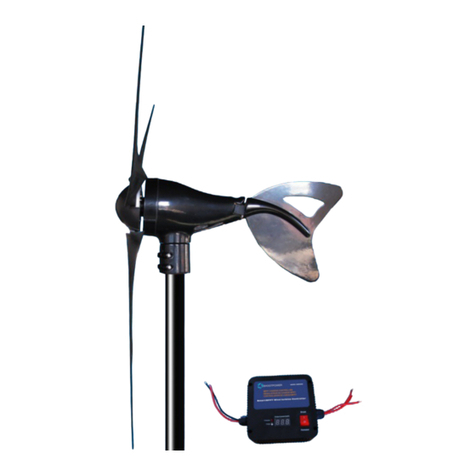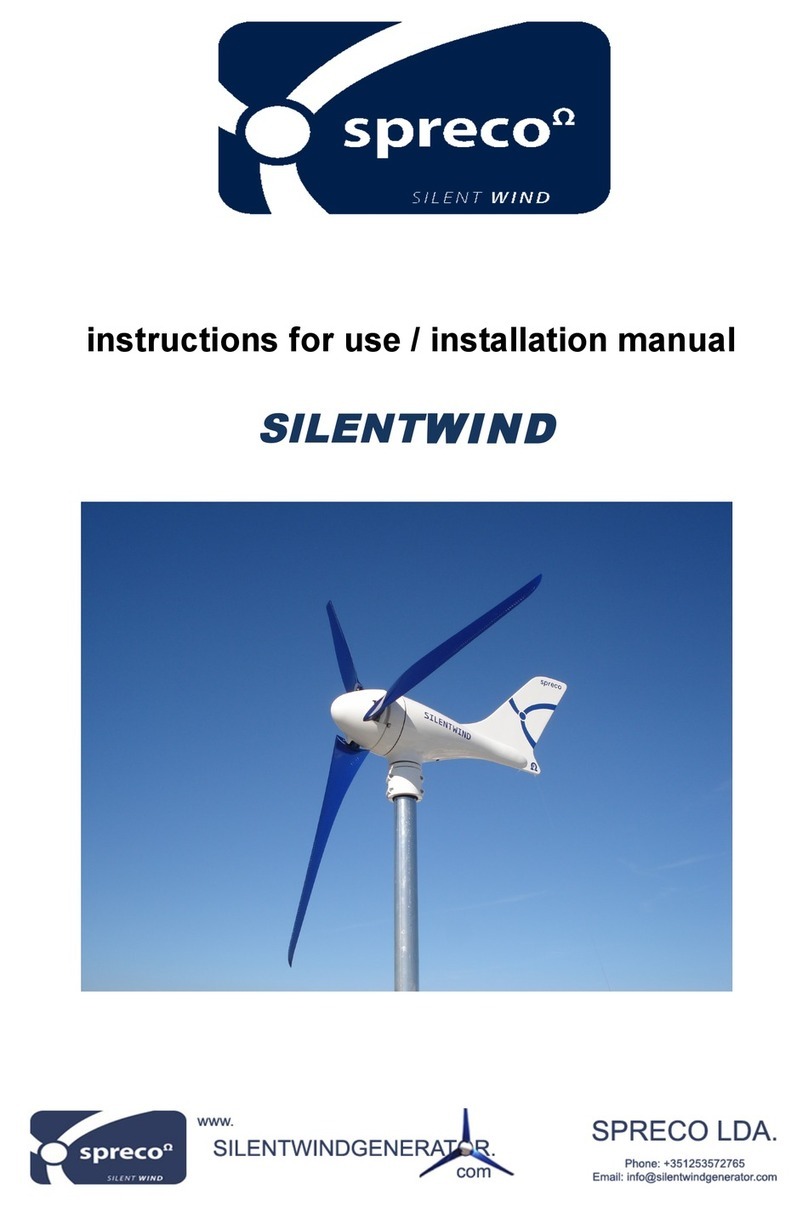
1.2 Range of application
The electric power generated by the SW 350-II charges batteries and can directly be used for 12 VDC or
24 VDC or 48 VDC-appliances (depending on the system voltage). AC-appliances are supplied via an
optional inverter. There is a wide range of high quality 12 VDC or 24 VDC or 48V equipment available like
energy saving lamps, refrigerators, deep-freezers, water pumps, ventilators, consumer electronics, TV,
radio and navigation equipment, etc.
Ideal fields of application for example are sailing yachts, campers, summer cottages, mountain shelters,
as well as industrial applications, like navigational aids, traffic management systems, environmental
monitoring stations or transmitters. For rural electrification the SW 350-II supplies basic power to families,
schools, small health care centres etc.
The combination with solar arrays is without problems. At many places, energy supplies from sun and
wind complement each other. That is why the SW 350-II is used in wind / solar hybrid systems to optimise
the availability of power (at minimised battery capacity).
2. Safety instructions
Please carefully study this manual before starting assembly and installation. The information provided is
to ensure your safety during mounting, operation and in case of trouble. If you have any additional
questions please contact your dealer, a superwind service partner or the manufacturer.
2.1 Potential sources of danger
Wind turbines in general – including small wind generators like the SW 350-II – are electrical machines
and thus potential sources of hazards.
2.1.1 Mechanical dangers
The main danger is the spinning rotor. The rotor blades are sharp and can cause very serious injuries
even at very low speed.
WARNING: Never touch the running rotor.
Never try to stop the rotor by hand.
Do not mount the rotor at places where any persons can reach the area swept by the
rotor.
The rotor blades are made of carbon fibre reinforced plastic. The material is extremely sturdy and enables
your SW 350-II to cope with heavy storms. However the material can break if any objects, e.g. ropes,
battens falling down, branches etc. get into the running rotor. The fragments of the blades are sharp and
can be thrown off the rotor at very high speed.
WARNING: In situations where there is a risk of objects getting into the spinning rotor no persons are
allowed to stay in the hazard zone of the wind generator. Otherwise the wind generator
has to be shut down. On sailing yachts the wind generator should not be operated during
any maneuvers as well as in bad weather conditions. The owner must be aware of the
dangers and ensure that no persons can be injured by the operation.
For aerodynamic reasons the rotor blades´ trailing edges are very thin and sharp. Unpacking the parts
you should be careful, in order to avoid injuries.
